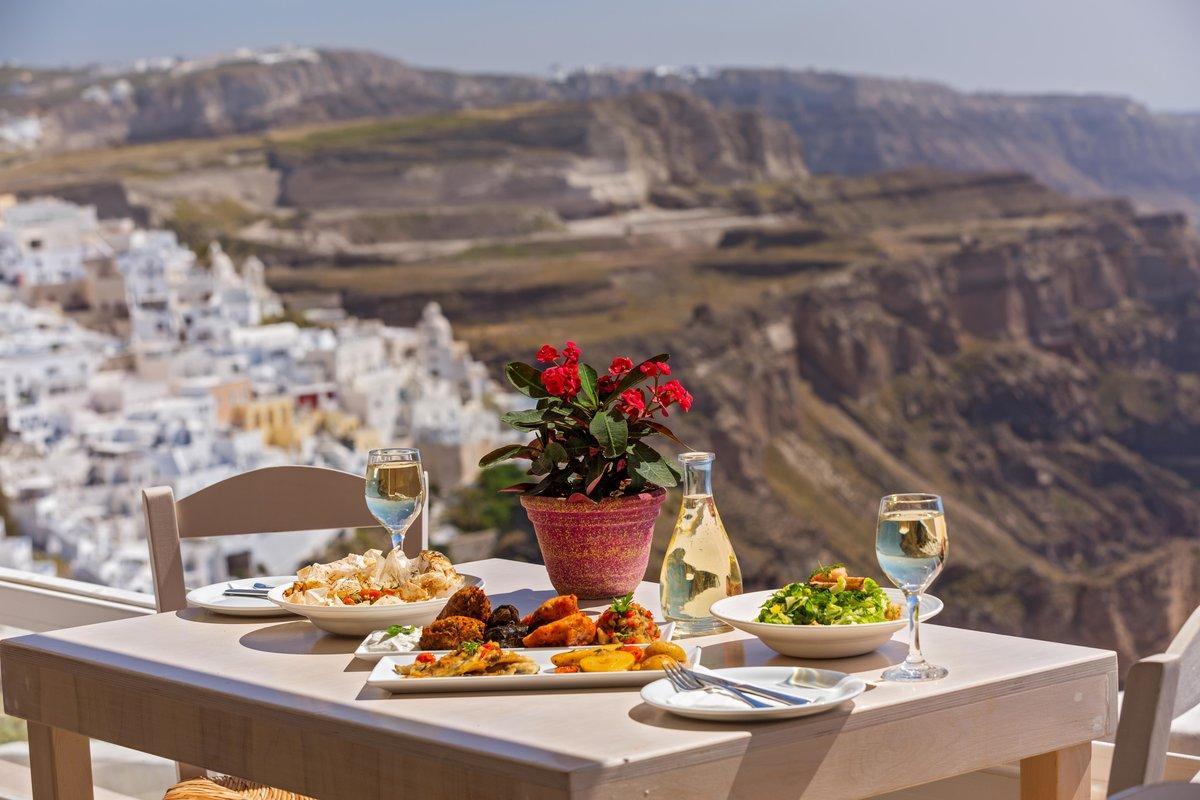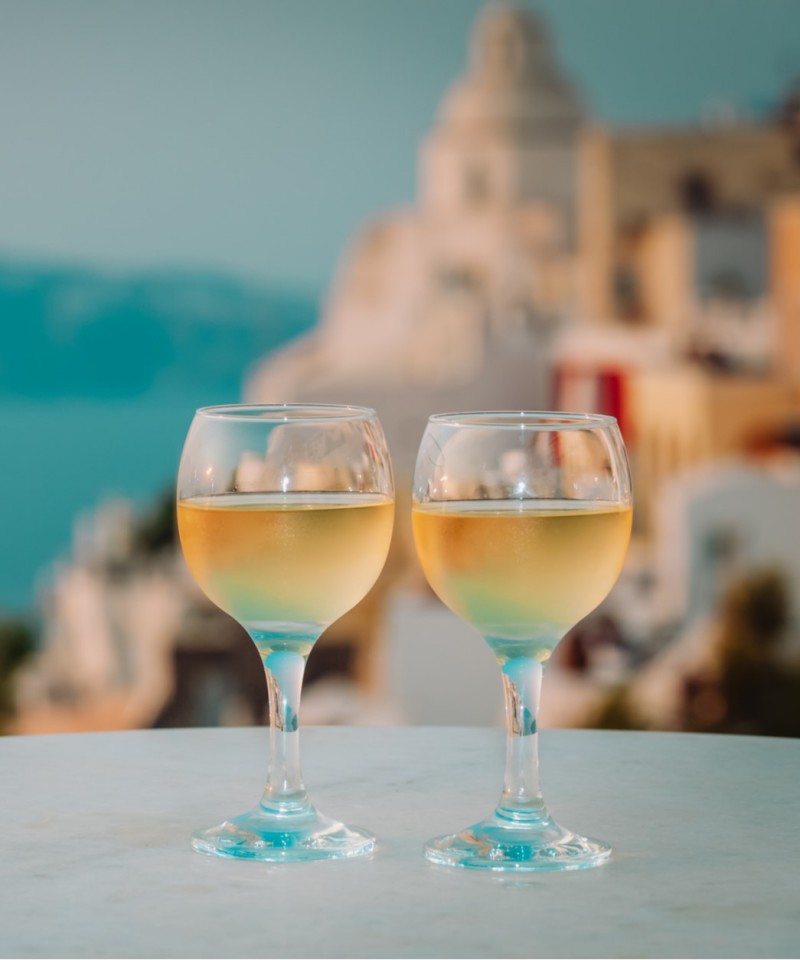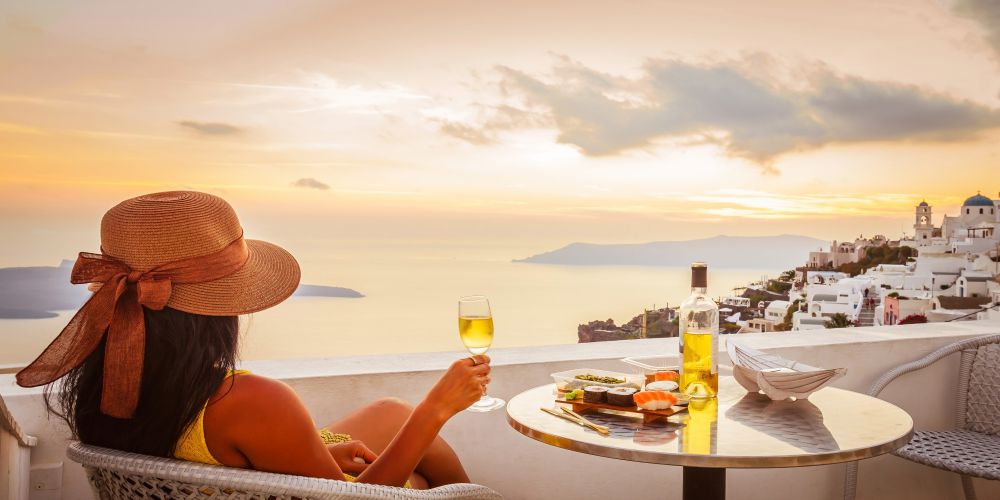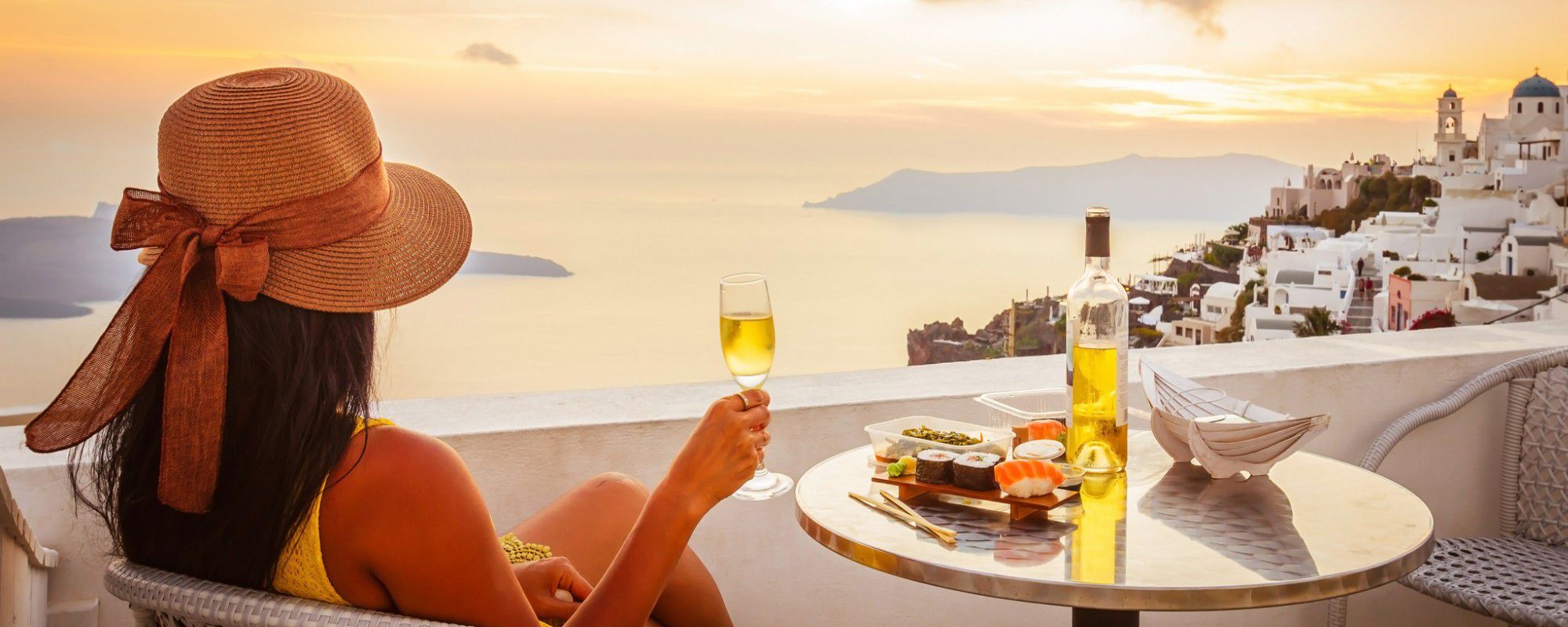
Santorini Wine Culture & Best Wineries
Key Takeaways
- Santorini is home to indigenous grape varieties like Assyrtiko, Athiri, and Aidani, which have been cultivated for centuries and are beloved among wine enthusiasts.
- Santorini's volcanic soil and Mediterranean climate create a unique terroir that contributes to the production of exceptional wines.
- Some of the best wineries in Santorini include Santo Wines, Gaia Wines, and Estate Argyros, among others.
- Exploring the wineries allows you to experience the winemaking process, from vineyards to cellars, and often includes wine tastings to savor the local vintages.

Open up your senses to the exquisite taste of Therian wine and taste Santorini in a glass through the different varietal wines it produces.
Ready to enjoy the sunset with a glass of Greek wine?
The Wine Production of Santorini
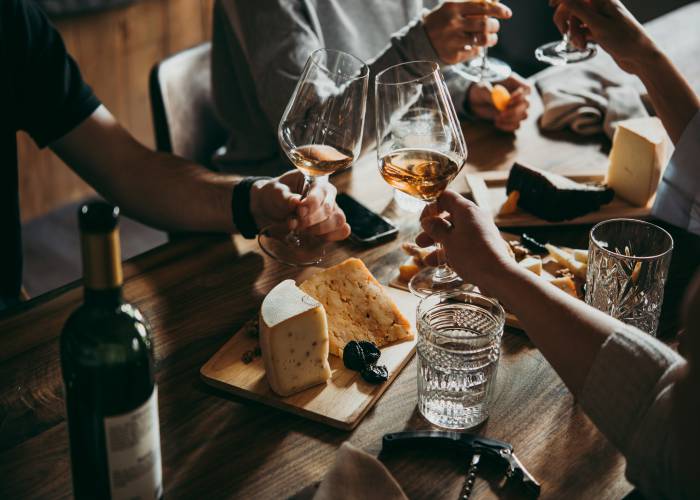
It is certain that the island of Santorini is blessed with a unique landscape and its world-famous sunset that steals the heart of every visitor.
Another thing, though, that you definitely have to do while on the island, whether you are visiting Santorini with kids or for a Santorini elopement is taste the delicious locally-produced wines with history and viticulture of thousands of years.
The very location of the island offered the prerequisites for wine production on Santorini.
Located approximately at the center of the Aegean Sea, it has a typical Mediterranean climate with few rainfalls, warm temperatures, and arid soil.
Adding to the picture the particular geology of the island and its volcanic soil, Santorini’s wines became popular and famous throughout the Aegean and even across this region due to their particular taste.
Archaeological finds at the site of Akrotiri and other places in the eastern Mediterranean area, such as Egypt, showed that one of the island’s main exports was its delicious wine transported far and wide with amphoras.
The History of Santorini Wine
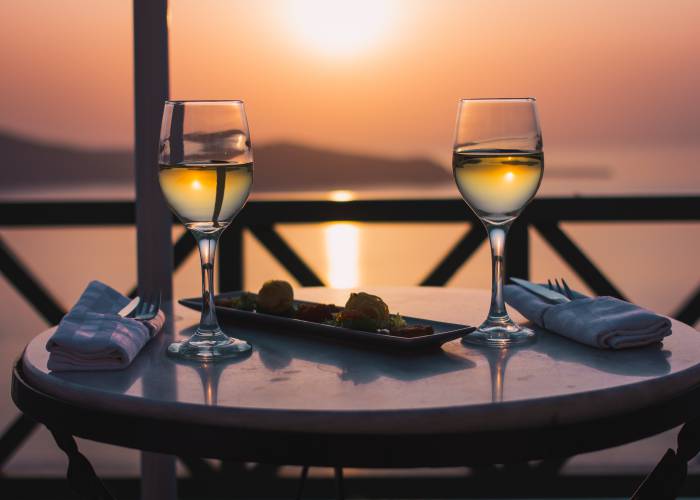
Throughout the centuries, the people of Santorini evolved the efficiency of their vineyards and adapted their viticulture to the specific needs of their land.
After the Latin rule of the Aegean islands, Santorini wine trading flourished even more.
The already established commercial network of the Mediterranean Sea and the naturally occurring high alcohol levels in the grapes allowed the product to reach faraway places by remaining unspoiled and of high quality.
By realizing this advantage, the Latin rulers introduced the cultivation of different varieties, expanding the exports even more.
Such was the success of Santorini that even after the Ottoman occupation this Muslim Empire allowed the island to continue producing alcohol, despite the fact that it is prohibited by the Quran, due to the enormous profits it provided to the empire’s treasury.
The Reasons Behind the High Quality of Santorini Wine
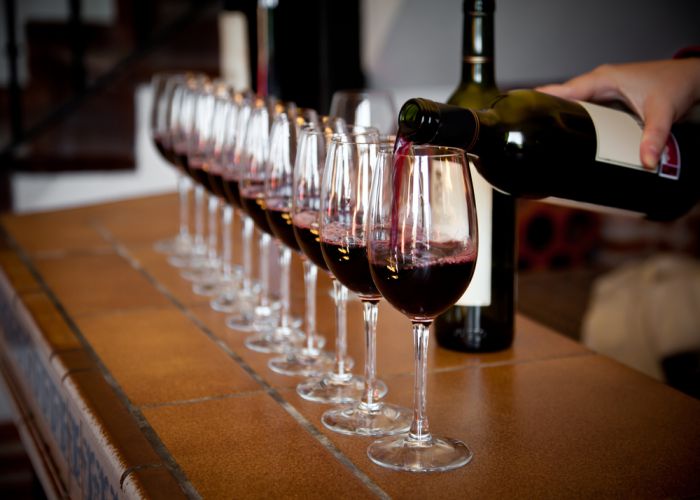
But what makes this wine so special? Apart from the climate, the geology of the island plays quite an important role too.
The soil of the island is really poor, consisting mostly of loose soil, ash, and rocks. Therefore, the vines have to penetrate the ground with their roots to ensure their access to water.
After reaching the calcareous subsoils, they secure the humidity required for their growth since these soil beds filter and absorb the year’s rainfall.
In addition, these vines are practically immune to the parasite of phylloxera, since Santorini does not have the clay deposits required for the existence of the parasite.
Therefore, some of the plants are hundreds of years old and have provided the island with uninterrupted wine production since antiquity.
The addition of different varieties on the island because of those advantages enriched the local production and shaped today’s viticulture.
During the growth of the vines, farmers weave the branches into a basket.
This modification allows the grapes to grow inside the safety of the basket, protected by the harsh winds that blow all year long on Santorini.
In addition, the leaves of the vines operate as an umbrella, shading the precious grapes from overexposure to the sun.
These factors contribute to the maximum exploitation of production and to the preservation of high-quality results.
The flagship of Santorini’s grapes is Assyrtiko, a highly acidic grape full of citrus and mineral nuances.
Other white grape varieties exist as well, such as the Aidani and Athiri, as well as some red grape varieties on a much smaller scale.
The Most Popular Classified Santorini Wines

Assyrtiko
Assyrtiko has a bright yellow color, a beautiful nose with floral aromas of the lemon tree and jasmine, and a well-structured palate with aromas of exotic and citrus fruits.
It is, without a doubt, the most well-known white wine in Greece.
It is a zesty, refined Santorini wine with a perceived saltiness, an intense mineral body, and a high acidity that gives a splendid finish.
It pairs perfectly with fresh grilled fish with olive-oil lemon and thyme, fresh or steamed oysters, shrimps with lemon dressing, pasta with seafood or oysters, Greek salad, salads with sauce vinaigrette, and cheeses with mild acidities such as feta or goat cheese.
Nykteri
Nykteri is the traditional white wine of the Greek island of Santorini, which is produced from extra-matured Assyrtiko grapes.
Its designation comes from its traditional wine-making, as in the past, the harvest took place during the day and the stomping of the grapes during the night (hence being nicknamed a night wine).
Nykteri wines are characterized by high alcohol (more than 14%), remaining sugars, and long aging in oak barrels. Its color is gold, and its nose is of pear and jasmine.
It is full-bodied, and it can be aged for at least 7-8 years.
Vinsanto
Santorini’s Vinsanto is a traditional wine with a history stretching back hundreds of years. Introduced during the Latin rule, it was used as a Communion wine.
Popular for its taste in every corner of the Mediterranean Sea, during the Medieval Ages, the Russian Orthodox Church proclaimed it the official wine used for the preparation of the Holy Communion, which has resulted in people considering it a 'holy wine.'
In order for a Santorini wine to be labeled 'Vinsanto,' the wine must be predominately made from the Assyrtiko grape—at least 51%, the remaining 49% is made up of Athiri and Aidani and some small amounts of locally grown white varieties.
Vinsanto (or Vin Santo) does not undergo any chaptalization and is made up only of the natural sugars and acids of the grapes.
Vinsanto is made from late-harvested grapes that have been dried in the sun for 12–14 days.
They are then crushed and fermented and are then aged for a minimum of 24 months in oak barrels.
The wine must achieve a minimum of 9% abv, and it is considered somewhat of a sweet wine and, therefore, a dessert wine.
The Best Santorini Wineries
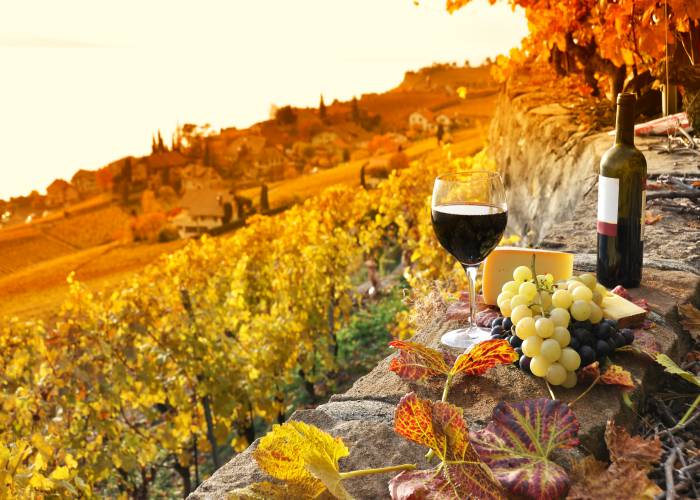
It comes as no surprise that the island of Santorini boasts a considerable number of wineries.
Through the years, the Santorini wineries became a highlight of the region, attracting thousands of wine enthusiasts from all over the world every year.
In these wineries, visitors get to gain insight into the wine production methods of each winery, stroll the vineyards, try local varieties of wine alongside traditional bites, and trust the guidance of professional winemakers to get introduced to the world of wine.
Boutari Winery
The Boutari Winery in Megalochori is an award-winning estate that belongs to the Boutari company.
It was established in 1989, and from that moment on it has played an integral part in the growth of viticulture on Santorini and in the commercial evolution and promotion tactics of the wines of the island across the world.
Gavalas
Additionally, the Gavalas family has been in the business of winemaking in Santorini since the late 19th century.
Nowadays, the modern Gavalas winery, which started production in 1998, can also be found in Megalochori.
Arvanitis winery
Without straying from the region of Megalochori, we can’t help but mention the family-run Arvanitis winery.
It is most famous for its Nychteri variety, a wine made from overripe grapes.
The setting of Arvanitis winery is nothing if not traditional: there, barrels are lined up, with taps for serving, and their names are written in chalk.
Venetsanos winery
The Venetsanos winery lies in a privileged location above Athinios, offering its visitors panoramic views of the famous Santorinian caldera.
The winery was built in 1947 by the Venetsanos family, and it soon became the first industrial winery in Santorini.
Its uniqueness comes from its practical and clever design that works from the top down in order for gravity to be the driving force instead of another source of energy.

Art Space
Moreover, the Art Space in Exo Gonia, Santorini, was founded in 1999 after the old winery that lay in the area was restored and transformed into a museum and gallery.
The winery itself started to produce wine in a small cave nearby.
Despite its small size, the high-technology equipment makes it a sophisticated winery that never sacrifices quality for quantity.
Estate Argyros winery
Of course, one cannot forget the family-run Estate Argyros in Santorini, which counts over 200 years of age.
It is located in the center of Messaria. Estate Argyros is popular for its award-winning Avantis wines, so make sure to try as many as you can during your visit.
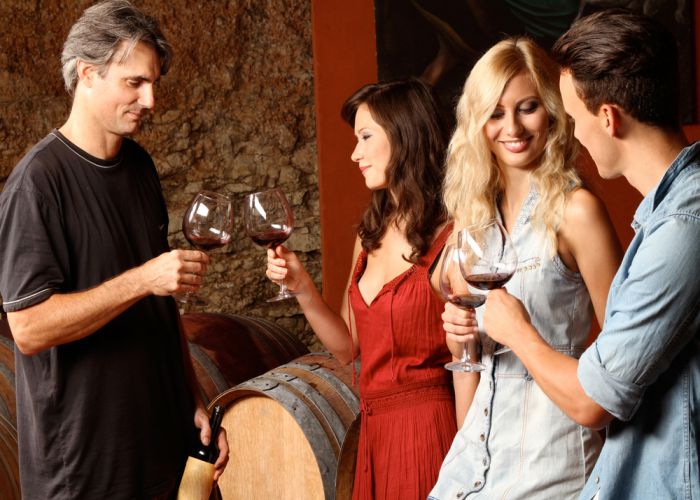
Hatzidakis winery
In Pyrgos, you should also visit the Hatzidakis winery, which was founded in 1997. The small cave winery today cultivates 100 acres, using organic farming techniques for the majority of them.
Santo Wines
Founded in 1947, the Union of Santorini Cooperatives, Santo Wines, produces monovarietal organic wines, aiming to preserve the local tradition and history of Santorini, conserve the traditional crops, and produce superb wine and traditional local products bearing the Santorini Protected Designation of Origin (PDO).

Roussos Kanava winery
Counting hundreds of years of wine production, the Roussos Kanava winery is the oldest one in Santorini.
Having updated its system, today it relies on up-to-date technology to create one-of-a-kind wines with distinctive flavors and aromas.
Koutsoyannopoulos Winery and Museum
The Koutsoyannopoulos Winery and Museum is the only wine museum in an underground cave in Greece.
Located in Vothonas, it is 8 meters below ground and stretches across 300.
Following a tour of the museum, visitors have the opportunity to go to a specially designed tasting area to try four of the best wines that the winery produces today.
Vassaltis winery
Established in 2015, the Vassaltis winery is the newest on the island.
It is housed in a contemporary building with the trademark Cycladic white color near the region of Vourvoulos. In addition to its delicious wines, Vassaltis provides its guests with a cozy atmosphere that will make you never want to leave!

Gaia winery
The Gaia winery is located on the beachfront of the eastern side of the island, very close to Santorini’s airport.
The winery is implemented with the latest winemaking systems, which guarantee the production of high-quality Assyrtiko wines.
Domaine Sigalas winery
The Domaine Sigalas winery, founded in 1991, is located in Oia, Santorini.
After a few years, in 1998, a new production, bottling, and aging facility was established in a private area. Today, the winery has the ability to process and bottle around 300,000 bottles annually.
Karamolegos winery
Last but not least, the state-of-the-art Karamolegos winery produces Assyrtiko, Aidani, Athiri, and Mavrotragano, the indigenous grape varieties of the island.
Of the 9 wines in total, the Nychteri PDO, Vinsanto PDO, and Mavrotragano are the most popular.
Santorini Wine Tours and Wine Tastings
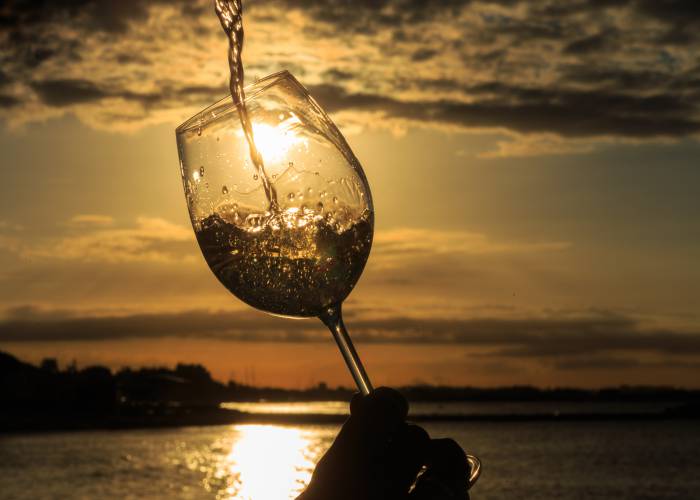
There is no doubt that the best way to discover the vast wine production of Santorini, which counts thousands of years of age, is through wine tours that will let you get an insight into the past and present of winemaking on the island.
If you want to enjoy a private tour that will take you around the best parts of the island all day and end with a delectable wine-tasting experience, then our Santorini Private Full-Day Tour With Akrotiri & Wine-Tasting is exactly what you’re looking for.
For the hopeless romantics who want to drink delicious wine while admiring the famous sunset of the island, our Santorini Sunset Wine Experience: Wineries Visit & Wine Tasting is one of the best things to do in Santorini!
Final Thoughts

Even today, wine production on the Mediterranean island of Santorini is one of the main sources of income for the local economy after the tourist industry.
The numerous wineries that preserve and continue the thousands-year-old tradition are to be found throughout the island, with every single one having its own slightly different recipe for winemaking.
While on Santorini, do not miss the chance to explore the rich viticulture of the island and discover some of the most famous wines to be found around the world, even if it's through the many Santorini restaurants.
Waste no more time, plan your own wine tour on Santorini or check out one of our Greece tours.
*Information about the description of the wines: gavalaswines.gr, boutariwinerysantorini.gr





